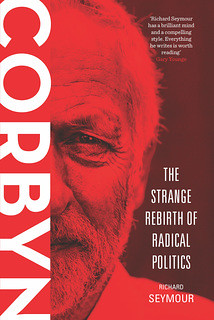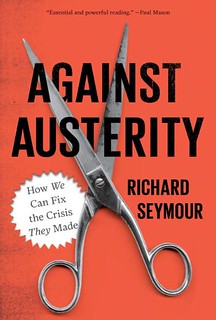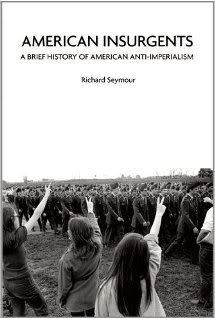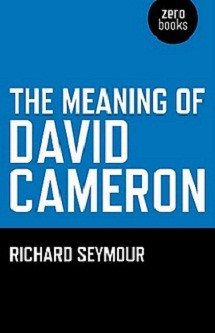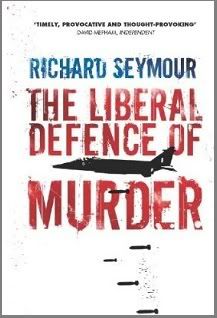Wednesday, June 04, 2008
The Making of a 'White Working Class' posted by Richard Seymour

It is far from obvious why class should be colour-coded. We can see how 'race' has been contiguous with strata within classes, so that the lowest wages and the least skilled occupations are dispensed to non-white members of the working class. We can also see how class is often construed as a kind of ethnicity, and how ethnic designations often overlap with economic positions. But the question of why there should ever be an identity such as a 'white working class' is clearly a social psychological one. One way of looking at this is to identify an extreme example to look for salient traits, and I think I have such in the 1922 Rand Rising. The Rand, or Witwatersrand, is of course the core of the gold and mineral mining industry of South Africa, and has been since the late nineteenth century. As such, it was the centre of capital accumulation at the time of the Rising, with the overwhelming (distorting) emphasis on mining capital.
Historically, the modern doctrine of ‘race’ emerged in two ways. The first was in the course of military confrontation, as in the combat between European farmers and American Indians. Originally considered the colour of the ‘juyce of Mulberries’ or ‘Olive coloured of a sad French green’, they were understood as having been ‘naturally white’, but darkened by the climate. Only when relations between them and Europeans were characterized increasingly by military combat were the racial codes introduced. Similarly, the battles of white Afrikan frontiersmen with 'natives' co-produce a colonial-racial ideology, which would be referenced during the 1922 rising. The second way in which 'race' emerged was precisely in the global ordering of the labour-system, and the replacement of white indentured labour with African slaves. Race had always ordered the colonial labour system in South Africa, whether when Africans worked as slaves until 1834, or during the period of 'colour bar' legislation in the Cape and elsewhere. The "colour bar" that emerged after the Mineral Revolution turned what had been a stratification according to skill into a stratification by race. But what was the cause of such policies. According to one well-known aqccount (HJ & RE Simons, Class and Colour in SA, 1850-1950), "White Labourism" was a "primary cause of policies that incite racial hostility", which implies that the political ideology of white workers intruded into the running of the labour system, redistributing the structure of wages and privileges to the benefit of the 'white working class'. It is certainly true, as I mentioned in a previous post, that white workers (mainly British workers trained in the Cornish mines, as part of what Jonathan Hyslop calls an 'imperial working class') pressed for the imposition of forms of colour bar legislation some time before employers were ubiquitously in favour of such means. However, as I also said, the demand became effective when employers and state administrators decided to back it. There is a rationale for this. As Harold Wolpe points out ('The White Working Class', Economy and Society, 1976), the particular demand for a skilled, supervisorial bloc of labour directing unskilled labour, resulted from the particular conditions of early mining capitalism, where the risks were high and the scope of the labour force too large for an individual capitalist manager-owner to handle (nowadays, of course, we have byzantine bureaucracies known as 'human resources' and 'personnel', as well as an apparatus of junior managers, to deal with this). British immigrant workers may have accepted colonial ideology. Used to being at or near the bottom of a vertiginous class pyramid in Britain, they were now part of a 'master race'. And arguably they had a shared grounding in the imperial experience that was quite different from their metropolitan cohorts. However, the drive for a colour bar was still at the stage of the 1890s an expression of an interested defined more by status and the desire to preserve it than anything else. Keeping the main labour competition out of skilled occupations preserved a skill monopoly. Further, just as a refinement to the point, the 'white working class' was not yet defined by whiteness - it didn't include, for example, proletarianised Afrikaners, who only became a majority of miners in the Rand by 1918, after a period of the state promoting Afrikaner employment in the mines. And 'white labour' had no serious political platform then of the kind that would gradually acquire and which was expressed in a way in the Labour-Nationalist Pact administration of 1924. (David Yudelman, in The Emergence of Modern South Africa convincingly disputes the idea that the Pact was a genuine political victory for white workers, but that is not quite my point: the point is that they were recognised as a special and particular constituency by that time). So, had employers not turned to segregationist measures in the mid-1890s, and had state personnel under the British not encouraged this in various ways, it is difficult to imagine a 'white working class' identity of the coherence that was later displayed emerging.
Afrikaners had to compete with African labour for access to employment during the early 1900s for a number of reasons. The social historian Timothy Keegan describes (in Konczacki et al, Studies in the Economic History of South Africa, Volume II) how an older Boer way of life had been squeezed by British capitalist penetration and land speculation. Previously they might have relied upon only guns and ammo for hunting, and wagons and oxen for travel and trade. But by the end of the Anglo-Boer War, they were political and militarily defeated, as well as economically transformed. The diminishing scope of 'free land' produced class stratification within the community, with some becoming reasonably profitable landowners and others becoming 'bywoners' (tenant farmers). They were, however, unable to compete with experienced African sharecroppers, whose advantages included their emphasis on communal life which helped them weather the vicissitudes of crop cycles. Keegan rather unflatteringly describes it in these words: "Mostly, they ended up in the industrial centres as unskilled proletariat, where the white supremacist state was eventually to save them from the consequences of their economic ineffectuality". This is not quite right. As Charles van Onselen shows (in Studies in the Social and Economic History of the Witwatersrand: Volume II, 1982), the initial tendency - quite successful for a while - was to join the local petit-bourgeoisie, involving themselves in two key economic areas: cab driving, and brick-making. Oh, laugh if you want: white bigots in the cabbie or brickie industry? I never in all my days! But of course the mining industry demanded a proper national transport system, which Kruger duly provided toward the end of the 1890s, just as the rinderpest was destroying the cattle that would pull the cabs, and the artisanal brick-makers lost out to mass production with Victorian technology. So, yes, Afrikaners were eventually forced into proletarianisation en masse. And, as more of them fled into the urban centres, dislocated by war and disease, they became more and more of a political problem.
It is sometimes claimed that Afrikaners remained unemployed through choice, by their refusal to accept conditions and jobs that their lack of 'economic effectuality' would have assigned them to - the jobs being done by the 'Kaffir', the 'native', African labour. Were they already so suicidally 'white' that they would rather starve than lower themselves to the status of the African working class? Robert Davies (in 'Mining Capital, The State and Unskilled White Workers in South Africa, 1901-1913', Journal of Southern African Studies, 1976) suggests otherwise. The truth is that it simply cost more to hire Afrikaner labour because it cost more to support the reproduction of their labour. As they were not subject to the migrant labour system and the various system of colour bars, they were not housed in vast cheap compounds, and fed with bulk bought meat. Their families, moreover, were not supported outside the capitalist sphere of production. Petit-bourgeois Afrikaner nationalist and labour politicians were sure that white workers would make up for it by superior productivity, unable to see a social logic to what they took to be a perversion of the capitalist class. And it is by the mid-1900s that you start to hear for the first time calls for a 'White Labour' policy. Previously, Afrikaner social struggles and complaints had been met with indifference, repression and occasional palliatives. By 1906, however, there was a recession in the Rand economy and huge numbers of displaced, unemployed Afrikaners - with not a few trained soldiers among them, who had recently come close to defeating the mighty British Empire. The protest had to be met in some way, particularly as it was noticed that British mine-workers during their 1907 strike against productivity speed-ups had gained the solidarity of Afrikaner labourers, whom they addressed as "fellow South Africans".
David Roediger points out that the 'labour republicanism' of American workers in the 19th Century involved its adherents measuring their status both against the dream of an egalitarian republic of small producers and the nightmare of chattel slavery. (David Roediger, The Wages of Whiteness, Verso, 2007) Similarly, white workers in early twentieth century South Africa could compare their lot with that of the indentured migrant 'Kaffir'. From 1910 onward, the mining industry was suffering a crisis of profitability which it sought to recover by boosting productivity, and increasing the number of machines that technicians supervised. The number of white employees per 1,000 tons hoisted declined continually between 1911 and 1915. Besides which, the employers were accelerating the fragmentation of skilled jobs into semi-skilled jobs that black workers could hold (still subordinate, of course). This was among the issues that drove the 1913 strike on the Rand which resulted in a humiliating defeat for the Smuts government. Lionel Phillips, the mine industrialist and Unionist politician concluded that it was nonetheless better to back down on this occasion than risk a general strike which might stimulate a revolt among the far larger mass of African labour. The state and mining capital adopted two strategies to meet the problem. The first was to devise a military strategy to defeat the strikers next time (and it seems there may have been deliberate efforts to provoke the next strike that took place in January 1914, and which was defeated by the recently constituted Union Defense Force). The second was to co-opt labour - but this meant white labour. For example, when African workers held a strike shortly after the white workers strike in 1913, they were simply brutally crushed - and don't appear to have gained any solidarity from white workers. There was no sense of accomodating their demands. So, among other measures, the government opened daily lines of communication with trade unions (which, I should point out, were segregated and had been since they were formed against stiff resistance from employers), and moved to impose state regulation on the industry. White labour, previously making demands from without the state, were now seen as fit subjects for incorporation into it - not, of course, as co-equals with capital or any such thing, but certainly as superior to their African co-workers.
Trade union leaders were given to expressing their demands in terms of preserving the 'colour bar' and holding back the 'black peril' - often as a disingenuous means of galvanising wider support for mundane economic strikes, but in fact the colour bar issue did come up repeatedly. In the post-WWI period, there was actually a steady erosion of the colour bar, because employers figured it would be cheaper just to alleviate the restrictions. The Low Grade Mines Commission went so far at one point as to recommend the legal abolition of segregation. A 1920 strike by African workers had - though it was pummelled relentlessly - scared the hell out of the employers, and even forced a few concessions out of them. And at the same time, the co-optation of white workers was having less and less success, and employers were anxious amid plummeting gold prices to reduce workers' wages. So, it was that the stage was set for the 1922 Rising on the Rand. Jeremy Krikler points out in White Rising (Manchester University Press, 2005) that at the time of the strike there were 200,000 workers in the Rand mines, but approximately only 10% were white workers. Yet, and this is the crucial thing, they made no appeal for solidarity from African workers. Not only that, but when African workers crossed the picket line, they were not considered scabs in the way that white workers were. The slogan of the strike was, infamously, 'Workers of the World Unite for a White South Africa'. It is worth pointing out that this didn't have the effect of galvanising mass cross-class support from white communities, as was presumably intended. So, what was going on?
Let's review: by 1922, Afrikaaners had fully entered the labour force in the mines, so the sector protected by colour bar legislation and custom was fully, inclusively 'white'; the fate of 'white labour' had become an explicit concern of the political class; the insitutions of segregated labour had been thoroughly entrenched, and the 1913 Native Land Act allotted three quarters of the land to white people or corporations, with rules restricting the sale of land to Africans; and neither the 1913 nor 1920 African miners strikes had resulted in much solidarity from white workers. So, I think that by this point it is safe to say that a 'white working class' identity had developed with some coherence. It competed with communist identities, of course, particularly after the electrifying revolution in Russia, which had also stimulated a wave of African revolt in the cities and would later infuse the countryside rebellion by the ICU (as in "I See You"). But my argument here is that to the extent that it is possible to conceive of a coherent 'white working class' identity, here it was. Now look at the sequel.
As the strike wore on, and it became clear that the Smuts government was intransigent (Smuts was viciously hostile to labour all his political life), the strike was developing into an open, armed insurrection. The Smuts government was plotting the most vicious military force, including aerial bombardment, against the strikers. As this ominous prospect unfolded, a staggering series of racial massacres occurred, comparable with similar riots and pogroms in America and Russia in the same era. I noted that African miners were not considered 'scabs' and they weren't. They were rarely attacked, and unions insisted that they be kept out of the fight, which was between themselves and management. And when the massacres did start, it was not of African mine workers, or even of labourers as such. It was random killing of civilians - there are eyewitness reports of women and children fleeing squads of armed white workers, and being shot down in cold blood. 150 were wounded, and 44 killed, by one estimate. Jeremy Krikler (in 'The Inner Mechanics of a South African Racial Massacre', The Historical Journal, 1999) supplies the background. In the weeks prior to the massacres, an hysteria had built up in white communities about the 'black peril'. A palpable terror of an uprising took hold: 'the Kaffir will kill us all'. This fear had apparently been stimulated by one relatively isolated confrontation between African and white labourers at the New Primrose Mine, but the preparatory conditions were: a) the strikers knew that a terrible intensification of the class struggle was coming; and b) they had justified their strike by appealling to race pride, and race privilege, to keeping the African down, and perhaps their own guilt would have led them to expect an African uprising. But Krikler suggests another aspect of this: they took their appeal to be part of the white community seriously, and in their murders dramatised their desire to be in solidarity with the institutions of white supremacy that were about to massacre them: it was as if to re-direct the fire onto the 'real' menace, as opposed to the respectable white workers who only wanted their fair share.
The consequence was that they were cruelly defeated. They didn't take the insurrectionary class logic of their fight as seriously as they took the racial element. One consequence was that they lost approximately 17.7% of their wages - which, as Yudelman points out, was not really recovered by the Pact administration, whose policies of segregation, wage controls and state regulation were closer to the opposition than most like to admit. The workers were unable to see beyond a sectional interest because they racialised it. They were in part defeated by their commitment to the idea of a 'white working class', which in turn was produced in the furnace of colonialism, and the prevailing global system of white supremacy.
Labels: apartheid, racism, segregation, south africa, white working class


